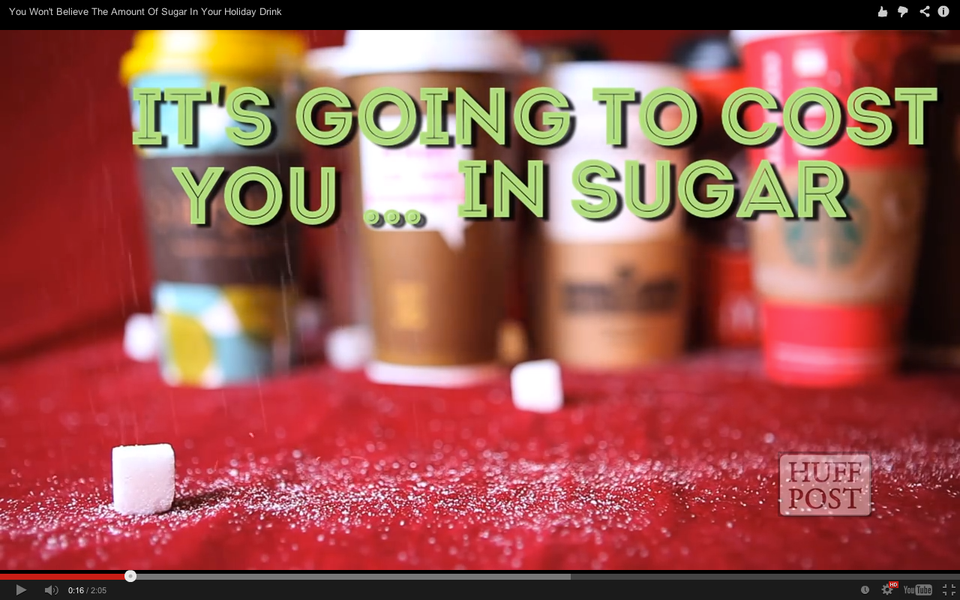Unreal Eats is Healthy Living's original video series, where we go behind calorie counts and health claims to examine what's really in the processed foods that scream loudest in our food environment.
It’s not surprising that energy drink companies bombard us with enticing promises of a “big bad buzz” or “wings when you need them.” Who wouldn’t want more energy? It’s hard to resist the allure of a pick-me-up to help you stay alert and energized.
Energy drinks -- those fizzy, sweet beverages made of caffeine, taurine, vitamins, herbal supplements, sugar and sweeteners -- boast of improving energy, stamina, concentration, and weight loss. And with more than $12.5 billion in sales in 2012 alone -- up 60 percent from 2008 -- it’s undeniable that these drinks have us hooked. In fact, they are the fastest growing U.S. beverage market. But is there a downside?
For our latest Unreal Eats report, we decided to find out. We picked six of the most popular energy drink brands and scoured their (substantial!) ingredient lists, complete with mysterious compounds like gum arabic, pyridoxine hydrochloride, Inositol and Cyanocobalamin.
But while the 20-plus ingredient lists were a turnoff, what surprised us most was how little caffeine each energy drink actually had. While their caffeine levels ranged from 80 mg to 215 mg per can, a modest 12-ounce Pike Place Roast Starbucks Coffee had significantly more, at 260 mg. If you can get more caffeine from an all-natural bean roast with proven health benefits, what’s so appealing about the unnaturally colored drinks on display at supermarkets and convenience stores?
There is remarkable hype surrounding these drinks. Red Bull, which acquired names such as “liquid cocaine” and “speed in a can” when first introduced in Austria in 1987, has had incredible success with its advertising campaigns, which are often targeted to children, adolescents and young adults: One study found that 30-50 percent of adolescents and young adults regularly drink energy drinks.
In a recent CBS This Morning piece, contributor Dr. David Agus noted that by making it so easy for kids to obtain and consume energy drinks, as a society we are essentially “encouraging kids to take performance-enhancing drugs.” He also explained how drinking a cup of coffee is a slow process of caffeine ingestion, whereas many energy drinks are a “shot” that delivers the caffeine all at once.
As has been noted time and again, caffeine has many health benefits. And the contribution of individual energy drinks to overall caffeine intake isn’t staggering -- but something about the way we consume them contributes to harm: Emergency room visits related to energy drinks doubled between 2007 and 2011, reported Boston.com, with caffeine overdose as a common cause. And of the 5,448 U.S. caffeine overdoses reported in 2007, 46 percent occurred in those younger than 19, according to a 2011 study published in the Journal of the American Academy of Pediatrics.
And for those who start young, many of the myriad other ingredients found in energy drinks have not been studied for potential long-term effects. What’s more, they are virtually unregulated anyway. Although the FDA limits the caffeine content in soft drinks, due to their inclusion in the “food” category, they do not regulate the amounts in energy drinks, which are classified as dietary supplements.
Despite these pitfalls, energy drink manufacturers often boast health claims on their labels. Many of the drinks we tested used B-vitamins as a “healthy” additive -- with a role in energy metabolism and cognitive function. “Vitamins are essential micronutrients that are required for maintaining normal body functions,” Red Bull claims on its website.
But B vitamins don’t actually provide us with energy jolts. “It’s brilliant marketing, but it doesn’t have any basis,” said Hope Barkoukis, an associate professor of nutrition at Case Western Reserve University in Cleveland in a statement to the Los Angeles Times. The copious amounts of B Vitamins in energy drinks are essentially just unnecessary extras, and they get flushed out.
With so much more research necessary to make any conclusive statements regarding the absolute safety of many ingredients in energy drinks, and with the lack of FDA regulation, lawmakers are starting to raise their voices about making changes. In a recent Senate commerce hearing senators pressured energy drink companies Red Bull, Rockstar and Monster to stop their child-targeted marketing practices.
All we know is that we're definitely sticking with good old-fashioned java.
Camera: Amber Genuske
Editor: Amber Genuske
Reporter: Cathryn Woodruff
Producers: Amber Genuske, Meredith Melnick, Laura Schocker, Cathryn Woodruff and Rachael Grannell
